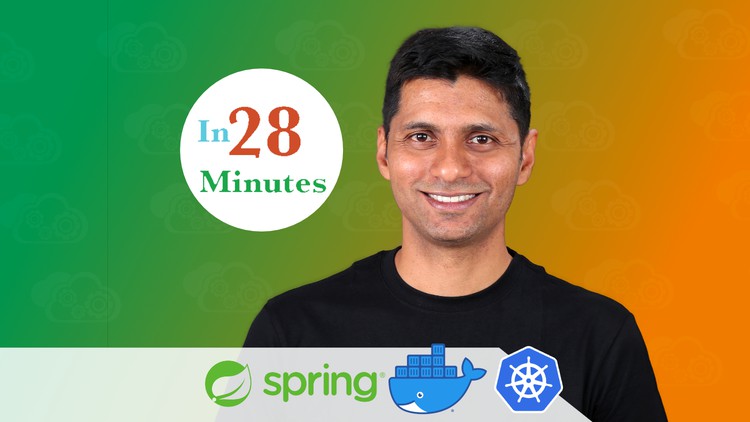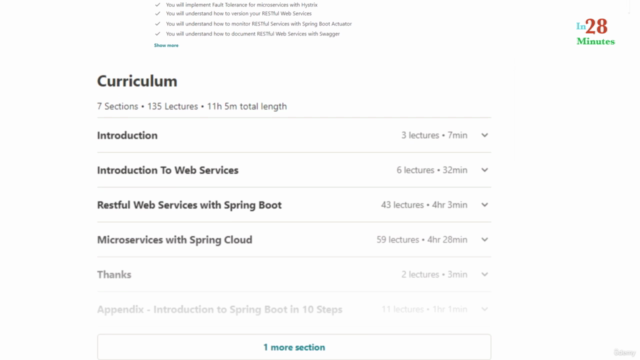Master Microservices with Spring Boot and Spring Cloud
Java Spring Boot Microservices 5-in-1 - Spring Boot, Spring Cloud, Docker, Kubernetes and REST API (REST Web Services)
4.57 (55711 reviews)

279,025
students
26 hours
content
Apr 2025
last update
$149.99
regular price
What you will learn
Develop and design REST API and REST WEB SERVICES with Spring Boot
Develop MICROSERVICES with Spring Boot and Spring Cloud
Orchestrate microservices with KUBERNETES
Create containers for microservices with DOCKER
IMPLEMENT Exception Handling, Validation, HATEOAS and filtering for RESTful Web Services.
Implement client side load balancing , Dynamic scaling(Eureka Naming Server) and an API Gateway
You will setup Centralized Microservices Configuration with Spring Cloud Config Server
You will learn to implement Distributed tracing for microservices with Zipkin
You will implement Fault Tolerance for microservices with Resilience4J
You will understand how to version your RESTful Web Services
You will understand how to monitor RESTful Services with Spring Boot Actuator
You will understand how to document RESTful Web Services with Open API Documentation
You will understand the best practices in designing RESTful web services
Simplify communication with other Microservices using Feign REST Client
Screenshots




Related Topics
1352468
udemy ID
9/16/2017
course created date
7/13/2019
course indexed date
Bot
course submited by